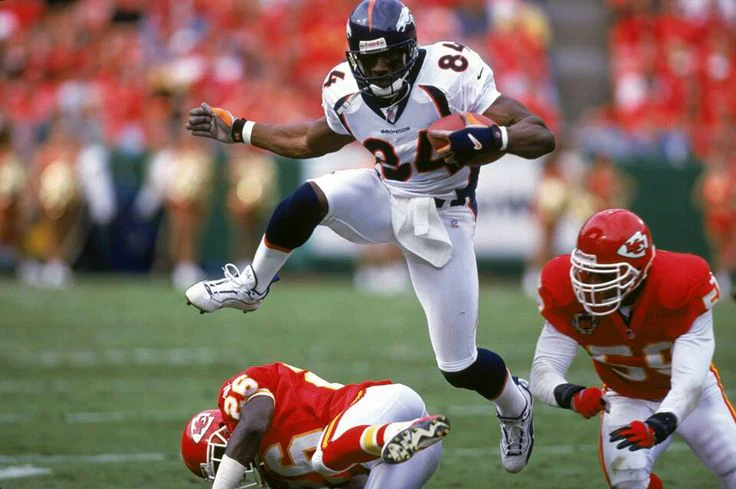The Multifaceted Marvel: Unveiling the Role of a Tight End in Football
In the dynamic world of American football, tight ends (TEs) are like the Swiss Army knives of the offense. These versatile players blur the lines between offensive linemen and wide receivers, performing a unique blend of blocking and receiving duties. This comprehensive guide explores the multifaceted role of a tight end, unpacking their responsibilities, the different types of tight ends, and the skills required to excel in this demanding position.
The Anatomy of a Play: Understanding Tight End Duties
A tight end’s specific duties can vary depending on the play call and the team’s offensive scheme. However, their core responsibilities can be broadly categorized into two areas:
-
Blocking: Tight ends play a crucial role in protecting the quarterback and creating running lanes for the running back. They achieve this by using their size and strength to engage with defensive linemen and linebackers. Here are some specific blocking techniques tight ends employ:
- Run Blocking: Sealing the edge to prevent defenders from pursuing the running back outside.
- Pass Blocking: Hipping out or setting up inside to block defenders rushing the quarterback.
-
Receiving: Tight ends can also be valuable receiving targets. They line up in various positions, such as next to the tackle (in-line) or split out wide like a receiver (flexed out). Their route-running skills and ability to catch passes in traffic are essential for generating offensive yards and scoring touchdowns.
The Tight End’s Advantage: Tight ends often exploit a size mismatch against linebackers who might be quicker but less physically imposing. They can also overpower defensive backs in jump-ball situations due to their height and strength.
A Spectrum of Tight Ends: Tailored for Different Schemes
The type of tight end a team employs often reflects their offensive philosophy:
- The Blocking Tight End (Inline Tight End): Built with a thicker physique and prioritizing strength for dominant blocking, these tight ends are often the first line of defense for the quarterback and running back.
- The Receiving Tight End (Move Tight End): Possessing a more athletic build and emphasizing route-running and pass-catching abilities, these tight ends function like oversized wide receivers, creating matchup problems for defenses.
- The Hybrid Tight End (Y Tight End): Offering a blend of blocking and receiving skills, these versatile tight ends can adapt to various play calls and provide offensive coordinators with flexibility.
The Tools of the Trade: Skills for Tight End Success
To excel as a tight end, a player needs to possess a unique blend of physical and mental attributes:
- Physical Attributes:
- Size and Strength: Tight ends typically range from 6’2″ to 6’7″ and weigh between 240 and 260 pounds. This size allows them to overpower defenders in blocking situations.
- Speed and Agility: While not necessarily needing blazing speed, tight ends should possess adequate athleticism to run routes effectively and separate from defenders in coverage.
- Hands: Sure hands are essential for catching passes in traffic and making contested catches.
- Mental Attributes:
- Football IQ: Tight ends need to understand complex offensive schemes, recognize defensive alignments, and adjust their assignments accordingly.
- Communication: Effective communication with the quarterback and other offensive linemen is crucial for successful blocking and receiving plays.
- Toughness: Playing tight end requires physical and mental toughness to withstand the rigors of blocking and battling for position in the passing game.
Beyond the Basics: Advanced Techniques for Tight Ends
Accomplished tight ends elevate their game through continuous learning and mastering advanced techniques:
- Blocking Techniques: Refining footwork, hand placement, and leverage allows tight ends to be more effective blockers against various defensive fronts.
- Route-Running: Developing a diverse route tree, including in-breaking routes, out-breaking routes, and seam routes, allows tight ends to create separation and exploit defensive weaknesses.
- Box Technique: This specialized blocking technique involves sealing off a defensive end to create running lanes for the running back.
Gridiron Greats: Iconic Tight Ends Who Shaped the Game
Throughout football history, legendary tight ends have left their mark on the game:
- Brent Jones: A dominant blocker and receiving threat, Jones is widely regarded as one of the greatest tight ends of all time.
- Tony Gonzalez: A prolific receiver with exceptional hands, Gonzalez holds numerous tight end receiving records.
- Rob Gronkowski: A matchup nightmare for defenses, Gronkowski’s combination of size, strength, and athleticism revolutionized the tight end position in the modern era.






More Stories
Where to Watch USMNT vs Jamaica National Football Team
How I Met My Monster
How Should a Ring Fit